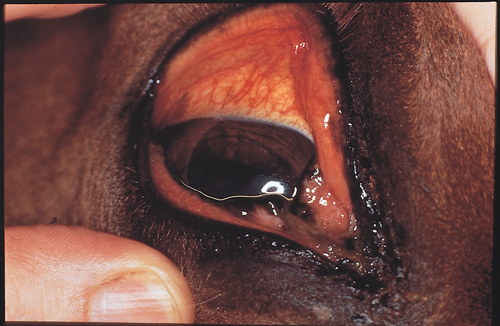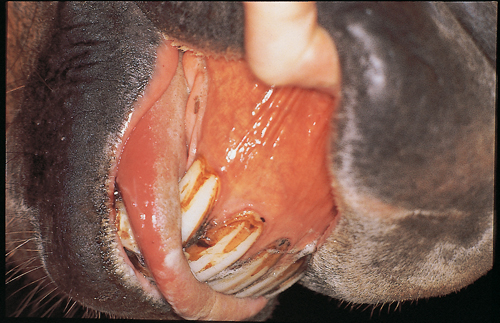Equine Internal Medicine Q&A 03
| This question was provided by Manson Publishing as part of the OVAL Project. See more Equine Internal Medicine questions |
A 10-year-old Tennessee Walking Horse mare, kept on pasture, was presented due to a rapid onset of abnormal mentation manifested as compulsive circling, repeated yawning and apparent blindness. Her sclera were markedly injected and her oral mucous membranes were toxic, with an underlying icterus. Hepato-encephalopathy was diagnosed on the basis of elevated serum liver enzyme activities, bilirubin concentration and bile acid concentration. Before performing a liver biopsy, a clotting profile was performed.
| Question | Answer | Article | |
| What does the prothrombin time (PT) test? | PT tests the extrinsic arm of the coagulation cascade, which begins with activation of factor VII.
|
Link to Article | |
| What does the activated partial thromboplastin time (APTT) test? | APTT tests the intrinsic arm of the coagulation cascade, which begins with activation of factor XII.
|
Link to Article | |
| Which clotting time, PT or APTT, would you expect to be prolonged first in a horse with hepatic failure, and why? | The PT, because factor VII has a very short half-life. Therefore, with decreased production, the available factor VII is depleted more quickly than the factors with longer half-lives.
|
Link to Article | |
| Horses with liver failure are often endotoxaemic due to the failure of the hepatic macrophages to phagocytoze gut-derived endotoxin. Can you explain why this endotoxaemia might exacerbate factor VII consumption? | Endotoxin stimulates extrinsic coagulation by stimulating the expression of tissue factor on the surface of mononuclear cells. Tissue factor binds factor VII, thereby initiating the extrinsic coagulation cascade.
|
Link to Article | |

